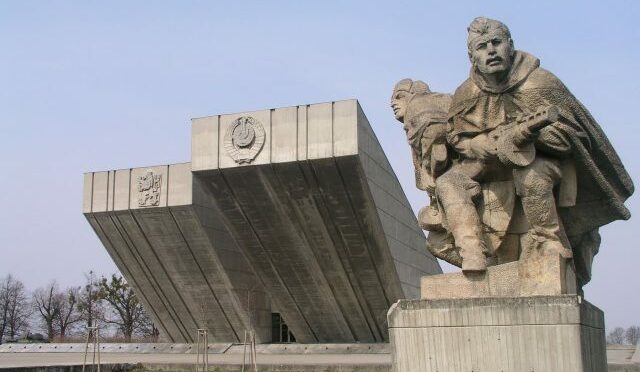Visual Representation of the Second World War in Museums, Memorials, and Commemorations in Central Europe
A project carried out within the TANDEM CNRS-SAV program developed by the Slovak Academy of Sciences (SAV), the CNRS Humanities & Social Sciences (CNRS SHS), and the French Research Center for Social Science Research (CEFRES)
Project principal investigators: Petra Hudek and Thomas Chopard
Petra Hudek and Thomas Chopard’s TANDEM project on “Visual Representations, Memorials and Commemorations of the Second World War in Central Europe” aims to examine historical narratives, memorial practices and commemorations in Slovakia, the Czech Republic and Poland. It will analyze the modifications and re-elaborations of museums and monument-related practices from the fall of the Communist regime to the present day on different scales: that of the major national museums of the Second World War, that of emblematic local museums and that of museums dealing with the Holocaust. The project aims to take into account the specific context of Central and Eastern Europe and to analyze the impact of the war in Ukraine on the development of national discourses in museums, monuments and commemorations. Starting in 2024 and covering the period of intense commemorations in 2025, this project will simultaneously study static visual elements of exhibitions, catalogues, and public history discourses as well as more dynamic elements linked to the memorial calendar. The aim of our research is to understand how current conflicts affect visual representations of past wars and to what extent the different national policies observed (in Czech Republic, Slovakia, and Poland) re-evaluate the role of the Red Army in the liberation of Central and Eastern Europe and their national narratives.
The project, co-organized by the CEFRES and the Slovak Academy of Sciences, is grounded at the intersection of history and memory studies. Its comparative dimension also intends to take these European issues out of the perimeter of national discourse and offer a more detailed understanding of the evolution of discourse, practices, and mechanisms of representation of the memory of the Second World War in Europe.

